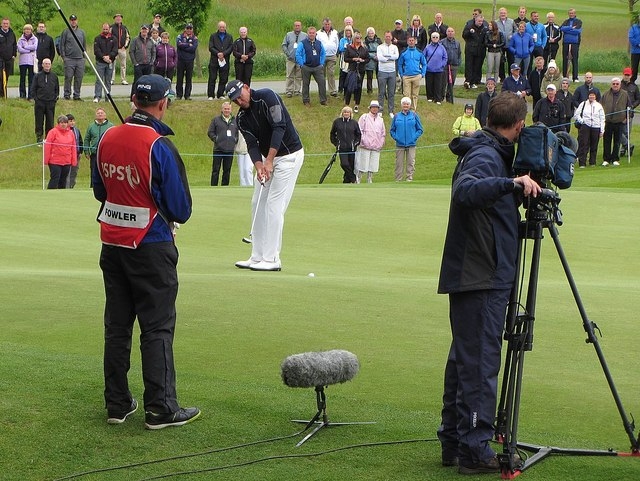
Decision begins immediately and entails two standards
In a swift response to increasing debates over television reviews, golf’s ruling bodies issued a new decision on the Rules of Golf that limits the use of video evidence and could spare players from being penalized even if they violated a rule.
The decision issued Tuesday – and effective immediately on all tours around the world – has two standards.
Players can avoid a penalty if the violation could not be noticed with the naked eye. That would have spared Anna Nordqvist a two-shot penalty during a playoff in the U.S. Women’s Open last year when her club nicked the sand while she was playing from a fairway bunker.
Rules official also can eliminate penalties if they feel players made a “reasonable judgment” in taking a drop or replacing their golf balls on the putting green.
“We’re all responsible for applying rules and calling penalties on ourselves,” said Thomas Pagel, the USGA’s senior director of rules. “But we’ve seen situations where there is no way the player or anyone around the player could be aware of that. When dealing with video evidence, should we be holding players to a high standard simply because they’re on television?”
Top officials had discussed these new standards over the last five years during a rules modernization project. The new set of rules, once it goes through a public comment period, is to take effect in 2019.
The USGA and R&A decided not to wait.
The catalyst for such quick action was Lexi Thompson, though it was not clear if she would have been exonerated from a four-shot penalty with six holes to play in the ANA Inspiration earlier this month.
Thompson had a 15-inch par putt on the 17th hole in the third round when she stooped to mark the ball, and then quickly replaced it about an inch away. A television viewer contacted the LPGA Tour the next day, and officials determined it was a clear violation.
Thompson was assessed a two-shot penalty for where she replaced the ball, and because it happened the day before, she received a two-shot penalty for signing an incorrect scorecard. She went from a three-shot lead to one shot behind, and eventually lost to So Yeon Ryu in a playoff.
Under the new decision, players should not be held to the “degree of precision” that video technology can provide. The rules committee would consider such things as the players’ actions, their explanation and the amount of the discrepancy relative to the drop.
Thompson, who did not speak to reporters after the final round, said in a Golf Channel interview: “I did not mean that at all. I did not realize I did that.”
Two issues the USGA and R&A did not tackle was whether to allow television viewers to call in violations, and whether to add penalty shots for what becomes an incorrect scorecard. That still could be coming.
In addition to the new decision, the USGA and R&A announced a working group of officials from the LPGA Tour, PGA Tour, European Tour, Ladies European Tour and the PGA of America to start a comprehensive review of broader video issues.
Golf officials typically care less about the source of information and more about whether a rule was broken and if a penalty should be assessed. Pagel said the new decision on video evidence will minimize the impact viewers have on a competition.
“The moments where you say, ‘Wow, a player is penalized for that?’ Those situations go away. The controversies go away,” he said. “And we think that’s good news.”
The working group also will consider whether to change the centuries-old belief that a scorecard is sacred. The USGA and R&A last year altered the scorecard rule so that players who unknowingly violated a rule that affects their score are docked two shots for an incorrect card. Previously, they were disqualified.
“These are big topics that have consequences,” Pagel said. “We want to sit down collectively to make sure we’re all comfortable with where we might end up.”
The USGA and R&A have never moved this quickly with such frequency. The Rules of Golf are updated every four years, while the Decisions are updated every two years. But this is the second time this year a decision was effective immediately. The other was a local rule in January that eliminated the penalty for accidental movement of the ball. That was the penalty eventually given to Dustin Johnson at the U.S. Open last summer.










